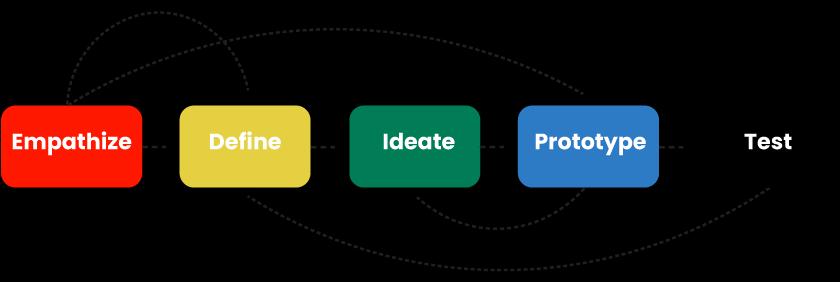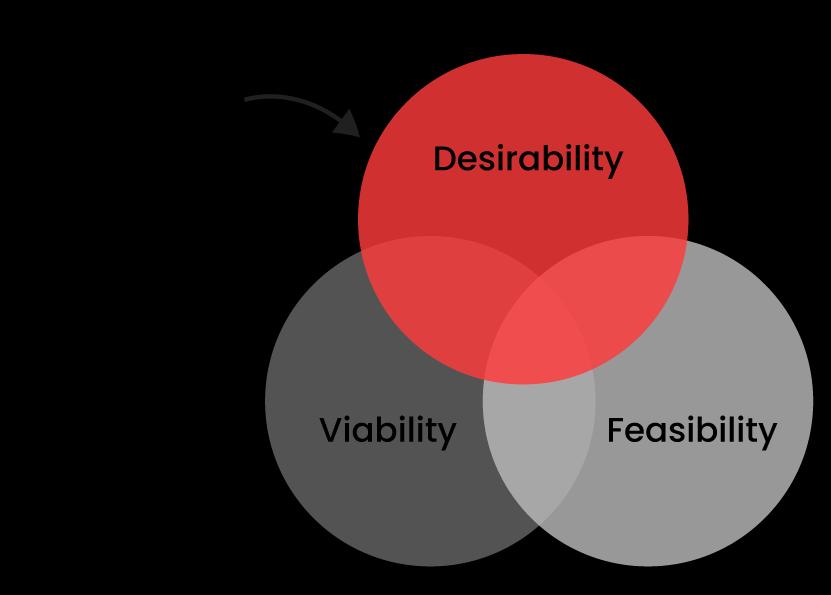Why do the leading companies of the world such as Apple, Google, Samsung, etc. have rapidly adopted the Design Thinking approach? Why is it so popular? If you want to know the answers to such questions then we have got covered. In this blog on What is Design Thinking, you will be able to find the answers of the above questions and much more. So let's get started with our topic.
| If you want to Enrich Your Career Potential in Design Thinking - then Sign Up for our "Design Thinking" Online Course |
What is Design Thinking?
Design thinking can be defined as cognitive, strategic, and practical processes by which design concepts i.e proposals for products, buildings, machines, communications, etc. are developed. Most of the key concepts and aspects of design thinking have been identified through studies, across different design domains, of design cognition and design activity in both laboratory and natural contexts.
Design thinking is often associated with prescriptions for the innovation of products and services within business and social contexts. Some of these prescriptions have been very much criticized for oversimplifying the design process and trivializing the role of technical knowledge and skills.
Design Thinking is an iterative process wherein we seek to understand the user, challenge assumptions, and redefine problems. This is done in order to identify alternative strategies and solutions that might not be instantly apparent with our initial level of understanding. Apart from that, Design Thinking also provides a solution-based approach to solving problems. It is a way of thinking and working as well as a collection of hands-on methods to solve problems.
What allows people to go ahead with design thinking?
You might be the person to wonder why people move towards the implementation of design thinking in their workplaces, personal activities, and business.
Now, we shall also spread out our discussion in this aspect.
So, the substantial force that drives people to go ahead with the implementation of design thinking is a perpetual enhancement in technology. As today's organizations are becoming completely software-driven, the scope of change enhances and so the complexity.
Most organizations look for the implementation and execution of ingenious solutions to solve their problems. With the presence of a structured creative framework, companies can easily enhance their scalability and business reaches height.
The term structured creative framework is absolutely ingested in design thinking and this acts as an exceptional tool for enhancing customer experiences. It shows a clear path in minimizing risks, augments performance, and empowers employees.
This process delivers creative frameworks to address complicated human-centered problems and suggests the best solutions pertaining to:
- Re-evaluation of value
- Reawaken of creative business approaches
- Altering market trends and technologies
- Intricated communal challenges relating to water, health, and climatic conditions
- Problems concerning various stakeholders and multiple organizations
Accomplishment takes place when design thinking addresses innovative solutions based on the necessities of real people.
| Related Article: Design Thinking Model |
Design Thinking Principles
There are few principles that are vital to design thinking. These are reflected in the design thinking methodology. The five of design thinking’s most important principles are as follows:

1. User-centricity and empathy
Design thinking is nothing but finding solutions that respond to human needs and user feedback. People are the drivers of innovation and not technology. So an important part of the process involves stepping into the user’s shoes and building genuine empathy for your target audience.
2. Collaboration
The aim of design thinking is to pool a diverse variety of perspectives and ideas and this is exactly what leads to innovation. Design thinking promotes collaboration between heterogeneous, multidisciplinary teams that may not typically work together.
3. Ideation
Design thinking is more of a solution-based framework, so the focus is on coming up with as many ideas and potential solutions as possible. Ideation is both a core design thinking principle as well as a step in the design thinking process. The ideation step is labeled as a judgment-free zone where participants are encouraged to focus on the number of ideas, rather than the quality.
4. Experimentation and iteration
It’s not only about coming up with ideas but also about turning them into prototypes, testing them, and making changes based on user feedback. Design thinking is an iterative approach, so you must be prepared to repeat certain steps in the process as you uncover flaws and shortcomings in the early versions of your proposed solution.
5. A bias towards action
Design thinking is an extremely hands-on approach to problem-solving favoring action over the discussion. Rather than hypothesizing about what your users want, design thinking encourages you to get out there and engage with them face-to-face. Instead of talking about potential solutions, you’ll turn them into tangible prototypes and test them in real-world contexts.
| Related Article:Design Thinking Interview Questions |
Design thinking phases
Technically speaking, design thinking might be described in many ways, phases, and methods. But the fundamental and essential methodology, phase, and, framework that is followed by many is as below:
1. Empathize
The most crucial and initial phase of structuring a clear framework in design thinking is Empathize. This phase is all about getting a clear picture of user thoughts, strategies, desires, and objectives. This stage makes you understand the user both in an emotional and psychological aspect.
Sit and have a coffee with the user.
Make sure that you collect deep and detailed information from the user. Let your pencil note all the key points.
2. Define
This phase is completely apportioned about defining the problem.
Well, you have a clear sketch of user findings from the empathize phase and now start to have a clear sense of those in the context of:
• What complications and perplexities they are stumbling upon?
• What is the major issue that you need to address?
• What methodologies and patterns do you implement?
Making a clear sense of all these lets you have a clear problem statement in the context of the user. Now, make your move towards the third phase.
3. Ideate
Being with a clear and dynamic understanding of user’s problems, now it’s time to execute your thoughts on delivering potential solutions. Here, you need to implement your creative solutions introducing as many modern angles and solutions as possible.
There are various kinds of ideation procedures where designers might implement, ranging from brainstorming to bodystorming — and intense lateral-thinking procedures allowing the designer to challenge well-known principles and discover comprehensive options. By the end of the ideation, highlight the key points and head towards the next phase.
4. Prototype
The fourth phase in this process is regarding experimentation and conversion of thoughts into tangible results. In general, a prototype is defined as the scaled-down context of the product incorporating dynamic solutions identified in the above phases.
Here, the fundamental operation is to analyze each solution and emphasizing any limitations and mistakes. Throughout this phase, the suggested solutions might be agreed upon, redefined, or denied based on their performance in the prototype style.
5.Test
And here comes the major task and it is to test the proposed solutions. This is the final phase of the design thinking procedure.
In actuality, the conclusions of the testing stage will probably let you have your look at the previous phases, thus providing the outcomes you require to state again the actual problem declaration or to discover any new thoughts you might not come across before.
Yes, you have designed a structured framework and now you are in the aisle to implement it. Think that everything performs well in the initial phases of implementing design thinking.
Also, you need to go with frequent check-ins into the solution assuming extended sustainability of the solution.
Applying design thinking into your thought process scenarios converts an aggressive mindset to a collaborative one. All across the way, design thinking holds more benefits and delivers superior solutions in managing human-centered problems.
So, delivering a polished solution comes up with the amalgamation of brainstorming, and detailed insights into the user’s information.
Get to the habit of implementing design thinking in answering your problems.
Applications of Design Thinking
1. Business
Previously, designers would be involved only in the later parts of the process of new product development and they would only focus their attention on the aesthetics and functionality of products. Many businesses and other organizations have now realized the utility of embedding design as a productive asset throughout organizational policies and practices. Design thinking has now been used to help many different types of business and social organizations to be more constructive and innovative. Designers bring their methods into the business either by taking part in themselves from the earliest stages of product and service development processes or by training others to use design methods and to build innovative thinking capabilities within organizations.
2. Education
Design thinking is now explicitly taught in general as well as professional education, across all sectors of education. New courses in design thinking have been introduced at the university level across the world such as d.school, Stanford, MIT, Harvard, etc. especially when linked with business and innovation studies.
In the K-12 education sector, design thinking is used to enhance learning and induce creative thinking, teamwork, and student responsibility for learning. Design thinking can now also be seen in International Baccalaureate schools across the world, and in Maker Education organizations.
3. Computer Science
Design thinking has been central to the dominant methods of designing human-computer interfaces i. e user-centered design and human-centered design. Design thinking is also at the core of recent conceptions of software development in general.
Examples of Design Thinking Success
Product and service design is the most obvious context to benefit from design thinking. Apart from this, the design thinking framework can be used to tackle various kinds of challenges beyond the realm of design.
Design thinking is now increasingly being integrated into business as a way to boost innovation and teamwork. IBM developed their Enterprise Design Thinking framework with the aim to “help multidisciplinary teams align around the real needs of their users,”. They claimed that businesses that use the framework are twice as quick to get their products to market, 75% more efficient in terms of teamwork, and enjoy a 300% return on investment.
Insurance firm MassMutual used a design thinking approach to resolve the challenge of getting young adults to purchase life insurance. In collaboration with IDEO, they conducted extensive user research over the course of two years. Based on the learnings and outcome, they then embarked on a further two years of prototyping and testing. The end result was the Society of Grownups, a suite of digital tools that help to educate young people to make smart financial choices.
Summary
Design Thinking is usually referred to as ‘outside the box thinking’, as designers are attempting to develop new ways of thinking that do not abide by the dominant or more common problem-solving methods. At the heart of Design Thinking is the intention to improve products by analyzing how users interact with them and determining the conditions in which they operate. Design Thinking offers us a way to dig a bit deeper to uncover ways of improving user experiences.
I hope you have enjoyed reading this blog on What is Design Thinking. If you have any queries related to this blog then you can write them in the comments box below. We will try to resolve them as early as possible. Thank you and happy learning
 On-Job Support Service
On-Job Support Service
Online Work Support for your on-job roles.

Our work-support plans provide precise options as per your project tasks. Whether you are a newbie or an experienced professional seeking assistance in completing project tasks, we are here with the following plans to meet your custom needs:
- Pay Per Hour
- Pay Per Week
- Monthly
| Name | Dates | |
|---|---|---|
| Design Thinking Training | Jan 13 to Jan 28 | View Details |
| Design Thinking Training | Jan 17 to Feb 01 | View Details |
| Design Thinking Training | Jan 20 to Feb 04 | View Details |
| Design Thinking Training | Jan 24 to Feb 08 | View Details |

Anjaneyulu Naini is working as a Content contributor for Mindmajix. He has a great understanding of today’s technology and statistical analysis environment, which includes key aspects such as analysis of variance and software,. He is well aware of various technologies such as Python, Artificial Intelligence, Oracle, Business Intelligence, Altrex, etc. Connect with him on LinkedIn and Twitter.















